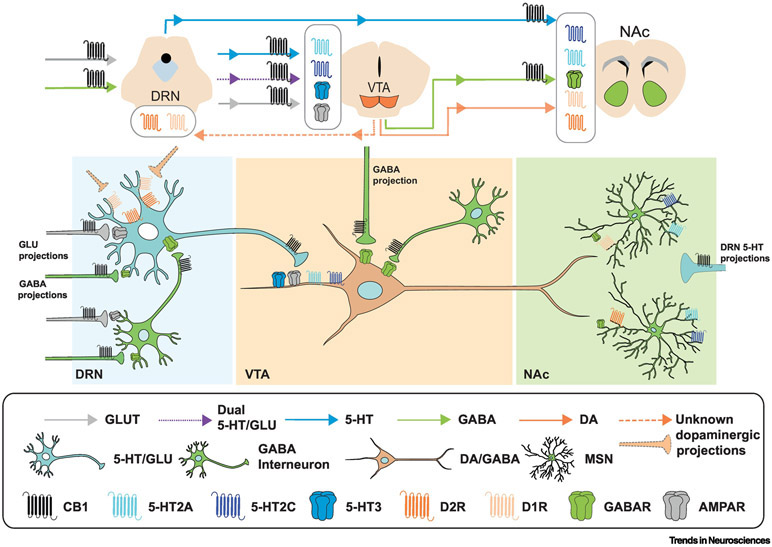Figure 1, Key Figure. Interactions between the dopaminergic, serotonergic and endocannabinoid systems, key projections and sites of interaction.
Reciprocal modulation of the VTA and DRN by several key neurotransmitters is shown, as well as projections to the NAc. Axons of GABA and glutamate neurons projecting to the DRN (left) express CB1 receptors. These inputs to the DRN can either inhibit or excite DRN neurons. Key cell types, pathways and receptors expressed are shown (see key). DRN projections to the VTA (see top diagram) include glutamatergic (grey), serotonergic (blue) and dual serotonin-glutamate releasing neurons (dashed purple) whereas DRN projections to the NAc are primarily serotonergic; these signals are transduced by multiple 5-HT receptors as well as AMPA receptors (within the VTA). In addition to reward-related dopaminergic inputs to the NAc, the VTA sends reciprocal projections to the DRN; some of these may be dopaminergic (orange) and are transduced by both dopamine D1 and D2 receptors. Importantly, there are multiple cell types in both the DRN and VTA, and it is not fully understood which neurons project specifically to which cell types. In addition, synaptic contacts within the DRN and VTA (not shown in the figure) mediate local interactions . Additionally, populations of DA neurons and GABAergic interneurons within the DRN and VTA, respectively, contribute to the modulation of these circuits. Abbreviations: GLU – Glutmate; MSN – medium spiny neuron

